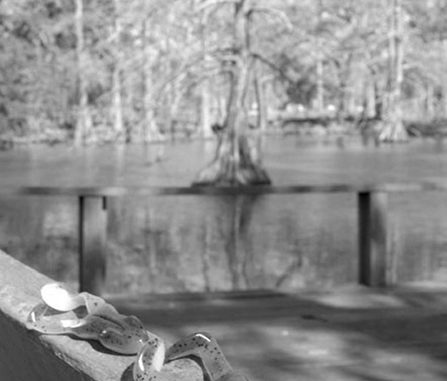
Fishing the Bayou Sale area will make any rookie think he’s a bass pro.
The guru of soft-plastic lure manufacturing always figured he probably had another hit on his hands with the Ribbit.
But less than two weeks after its debut in Louisiana, John Dean of Many has been pleasantly surprised by the poundage the plastic frog has accounted for on his home lake of Toledo Bend and at Lake D’Arbonne.
The ReAction Lures general manager, who has created, among other popular artificial lures, Gator Dogs and U-99s, said Ribbits have accounted for 9s, 8s and 6s, as well as 45- to 50-fish days. Some of the “hawgs” have been caught by Toledo Bend guides “Big John” Erickson, who lives in the Solon’s area, and Jim Shanley of Many, Dean said.
“When you’ve got a bait doing that, word spreads pretty fast. Those two guides on the lake have been using them since I got the first piece,” he said.
Erickson and Shanley were using prototypes that ushered in the finished product, two molds and so many trial and error phases later to satisfy Dean. He worked on it diligently after getting the brainstorm of an idea in December.
“It took eight weeks of cutting, pasting and welding,” he said.
Ribbits started rolling off the assembly line on Feb. 7, and have been jumping out the door, so to speak, at Toledo Town & Tackle in Many ever since, according to Dean. People are fishing it the traditional plastic frog way, as well as taking advantage of its versatility to go on a Carolina rig and as a jig trailer. They’ve even “slow-rolled” it like a spinnerbait.
“Any time there’s a new item, especially if it’s a hot item, people jump all over it. They take one look at it and they want it,” Dean said.
Apparently, the same can be said of bass.
The Ribbit is about 4 inches long and weighs 10 to 11 grams. It is available in some dynamite colors, including white, watermelon seed, watermelon red, watermelon red/pearl, green pumpkin red/pearl, lily pad, catalpa, black chili sapphire, green pumpkin red and watermelon gold.
Some of the top colors on Toledo Bend have been green pumpkin red/pearl and watermelon red/pearl, Dean said after talking to several happy anglers.
Dean would be the first to tell you it is a plastic frog first. But it is versatile.
“It’s basically designed to buzz on the surface, over stumps, over lily pads. It’ll walk through and over just about anything,” he said.
He believes speckled trout and redfish will eat the bogus frog.
He looked and fished with all the buzzin’ plastic frog-type models that came out last year after May, he said. He wanted to see what they did, see what they were about.
Then he incorporated his ideas into what a ReAction Lures plastic frog should do.
“I built my own. I built a better mousetrap. This particular one moves more water. It sounds like a buzz bait with a blurp, blurp, blurp noise to it that you can hear as far as you can cast it,” he said.
“It’s pretty bad to the bone. I’m telling you, you can hear it. It thumps like a buzz bait. It throws water like a buzz bait without a metal ‘ting’ to it,” he said.
In short, he said, “The feet go crazy. It’s a killer.”
At the end of each foot on a Ribbit, which has a soft, pliable body, is a paddletail-shaped appendage that is responsible for its noise-making antics as it’s pulled across the water.
A clear, round bead comes with each five-piece bag. The Ribbit tracks straight and true with the business end of the hook pointed up with the bead slipped on just before a knot is tied on a 2/0 or 3/0 Gamakatsu hook, which Dean recommends.
“I thought it was very important when I designed the bait that it had to track straight with the hook up. With the bead on there it makes it 100 percent,” he said.
Unlike some other plastic frogs, Ribbits won’t roll on the retrieve, he said.
For more information about Ribbits or other ReAction Lures products, call (800) 256-2075 or visit www.reactionlures.com.


